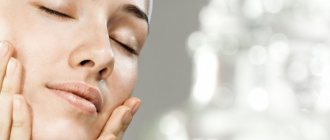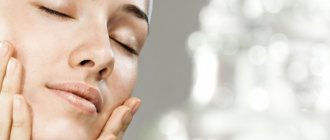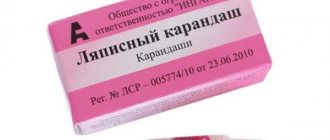Write a review
Reviews: 0
Manufacturers: Active Component
Active ingredients
- Urea peroxide
Disease class
- Brain swelling
- Glaucoma
- Pulmonary edema
- Surgical practice
Clinical and pharmacological group
- Not indicated. See instructions
Pharmacological action
- Diuretic
Pharmacological group
- Diuretics
Detailed description of the study
Protein is the main biochemical component of the human body, the basis of which is amino acids consisting of nitrogen, carbon, oxygen and hydrogen. Normally, protein metabolism is closely related to the liver, where their formation and breakdown, or deamination, occurs. The latter process is represented by a cascade of reactions, as a result of which urea is formed.
Urea, or carbamide, is the end product of protein metabolism, formed from ammonia, which is toxic to humans. Urea is the main nitrogen-containing substance in the body - it contains about 90% of the nitrogen from all broken down proteins. After formation in the liver, urea enters the blood, as well as other liquid media, and is excreted by the kidneys along with urine.
In the kidneys, urea, together with creatinine (the end product of metabolism in muscles), goes through the stages of filtration and reabsorption - reabsorption into the blood. Normally, most of the urea is excreted from the body through urine. The level of urea depends on the nature of the diet - the more protein food in the diet, the more it is formed and excreted. The reasons for the increase in urea can also include: a feverish state, strong physical exertion, the postoperative period, as well as taking hormonal drugs (thyroid hormones, adrenal glands) or increased activity of the hormones of these organs.
Also, the level of urea (in blood and urine) changes with kidney pathology, especially if the filtration process is disrupted, and liver - against the background of severe diseases in which liver cells cannot convert toxic ammonia into safe urea. In diseases that occur with renal failure, there is an increased level of urea in the blood and a decreased level in the urine. When the liver is damaged, urea decreases in both the blood and urine. Extreme renal failure, or uremia, is accompanied by a multiple increase in the level of urea in the blood and, if not properly treated, can lead to serious consequences.
The study of urea in urine is presented in two forms - in daily urine collected over 24 hours, and in a single portion. The choice of the form of analysis depends on the indications and, as a rule, remains with the attending physician due to the individual characteristics of each patient. It is most informative to take any analysis of urea in urine together with an analysis of urea in the blood, which allows for a more complete assessment of disorders of protein metabolism in the liver or the excretion of urea by the kidneys.
Similar drugs:
- Celandine grass (Chelidonii majoris herba) Vegetable raw materials
- Tamsulid Capsule
- Diacarb Oral tablets
- Epletor Oral tablets
- Britomar Oral tablets
- Verospiron Oral tablets
- Hypothiazid Oral tablets
- Lespenephryl Oral solution
- Lipril (Liprilum) Oral tablets
- Horsetail (Equisetum arvense) Vegetable raw materials
** The Drug Directory is intended for informational purposes only. For more complete information, please refer to the manufacturer's instructions. Do not self-medicate; Before starting to use the drug Urea, you should consult a doctor. EUROLAB is not responsible for the consequences caused by the use of information posted on the portal. Any information on the site does not replace medical advice and cannot serve as a guarantee of the positive effect of the drug.
Are you interested in the drug Urea? Do you want to know more detailed information or do you need a doctor's examination? Or do you need an inspection? You can make an appointment with a doctor - the Euro lab is always at your service! The best doctors will examine you, advise you, provide the necessary assistance and make a diagnosis. You can also call a doctor at home . Euro lab clinic is open for you around the clock.
** Attention! The information presented in this medication guide is intended for medical professionals and should not be used as a basis for self-medication. The description of the drug Urea is provided for informational purposes and is not intended for prescribing treatment without the participation of a doctor. Patients need to consult a specialist!
If you are interested in any other drugs and medications, their descriptions and instructions for use, information about the composition and form of release, indications for use and side effects, methods of use, prices and reviews of drugs, or you have any other questions and suggestions - write to us, we will definitely try to help you.
References
- Clinical guidelines for chronic kidney disease, 2022. - 156 p.
- Guyton, A.K., J.E. Hall. Medical physiology / trans. from English; edited by IN AND. Kobrina. - M.: Logosphere, 2008. - 1296 p.
- Pérez, V., Barrera, G., Hirsch, S. et al. Efficacy of urine urea nitrogen measurement to assess the compliance with protein restricted diets. - Nutr Hosp., 2022. - Vol. 36(3). - P. 714-717.
- Chin, H., Kim, D., Park, J. et al. Effect of urine urea nitrogen and protein intake adjusted by using the estimated urine creatinine excretion rate on the antiproteinuric effect of angiotensin II type I receptor blockers. - Nutrition, 2015. - Vol. 31(11-12). - P. 1333-8.
How does urea work in cosmetics?
Urea is used to improve the condition of dry skin. Getting on its surface as part of a cream for the face, hands or feet, urea draws water from the deep layers and “locks” it in the upper keratinized layer. As a result, peeling and a feeling of tightness disappear, the texture on the face and hands is smoothed, and wrinkles are reduced. And the feet get rid of rough “crust” and corns.
This component also serves as a conductor for other ingredients deep into the tissues - it helps the absorption of moisturizing, nourishing and regenerating substances.
What is urea
Urea is a product that is formed in the liver as a result of the synthesis of ammonia and carbon dioxide. The resulting compound is delivered by blood to the kidneys, where the filtering organ separates it from the general bloodstream and sends it into the urine.
Urea is a product unnecessary by the body, which must be completely eliminated, since its accumulation gives an osmotic effect, which can cause swelling of the internal organs in which it accumulates:
- liver;
- kidney;
- thyroid gland;
- spleen;
- pancreas.
Normally, the final product - urea - should be excreted from the body, but if there are any abnormalities in the functioning of the system, it is detected in the blood.
What other components are included in urea creams for the face and other parts of the body?
- To solve the problem of dryness,
add hyaluronic acid, glycerin, allantoin, and iris extract. - To improve the elasticity of the skin,
include collagen, shea butter, olive oil, vitamins A (retinol) and E (tocopherol). - to soften dead skin cells
. - For rejuvenation
use:
- lecithin – helps accelerate cell regeneration;
- algae extract, which tightens the skin;
- snail mucin – stimulates the production of your own collagen and elastin.
- To relieve inflammatory processes,
chamomile and calendula extracts and lavender oil are added.
How to use urea cream?
Care products with this substance are used 1-2 times a day. It is best to apply it to damp, warm skin - this ensures easier penetration of other ingredients into the deeper layers.
The opinion that cream for feet and other parts of the body containing urea should be used in some special way arose due to the following situation. There are products with a high (40–50%) content of this component. It is intended for medicinal purposes - getting rid of fungus, affecting spots and rashes with psoriasis, eczema, neurodermatitis. Such ointments are prescribed by a doctor, they are applied exclusively to damaged areas, and the time of use is limited to 2–4 weeks.
And those creams with urea, which can be bought not in a pharmacy, but in a cosmetics store, contain much less of this ingredient. Up to 25% of this substance is added to exfoliating products for feet and hands. Moisturizing face creams contain up to 10 percent urea (to combat serious age-related problems), but most often - from 1 to 5%. Therefore, they can be used in the most ordinary way.
Directions for use and dosage
For intravenous administration, a solution from the Urea powder substance is prepared immediately before injection under sterile conditions. It is impossible to administer a pre-prepared solution, since it decomposes during storage, and decomposition products can cause hemolysis (destruction of red blood cells). Use a 30% solution prepared with a 10% glucose solution. Dissolution of the powder occurs with the absorption of heat, as a result of which the prepared drug is administered only after aging (until its temperature reaches room temperature).
The solution is administered intravenously at a rate of 40-60-80 drops per minute; if necessary, to obtain a quick and maximum effect, an administration rate of 80-120 drops per minute is allowed. The daily dose can vary from 0.5 to 1.5 g of Urea per 1 kg of body weight. The effect is usually observed 15-30 minutes after administration of the solution and reaches a maximum after 1-1½ hours, the duration of action is 5-6 hours or more (up to 14 hours). Repeated intravenous administration is possible at intervals of 12-24 hours, but no more than 2-3 times.
Inside Urea is used in the form of a 50% or 30% solution in sugar syrup, the recommended dosage is 0.75-1.5 g per 1 kg of body weight. It is noted that in case of hypotensive glaucoma, the effect of the drug taken orally is observed in the same time frame as with parenteral administration (after 30-45 minutes). The dehydrating effect on brain tissue when taken orally appears after a few hours.
A 10% solution of Urea is recommended for topical use in the form of irrigation, rinsing and for soaking dressings in the treatment of purulent wounds (cleaning off dead tissue).
special instructions
Due to dehydration of the body, on the first day after using Urea, to reduce the risk of water imbalance, it is recommended to carry out an intravenous drip infusion of an isotonic solution of glucose or sodium chloride in a dose of 500-800 ml, with the addition of 0.1-0.15 g of vitamin B1 (thiamine) and 0.2-0.3 g vitamin C (ascorbic acid). The use of other diuretics is unacceptable.
For patients who are unconscious or under anesthesia, bladder catheterization is performed to drain urine.
When administered intravenously, it is necessary to be careful not to get the solution under the skin to avoid irritation and tissue necrosis.
The use of Urea is also possible in case of hypertensive crisis with encephalopathy, heart failure (exclusively in combination with loop diuretics).
During therapy, monitoring of blood pressure, renal function, electrolytes, and urea nitrogen concentration is required.











